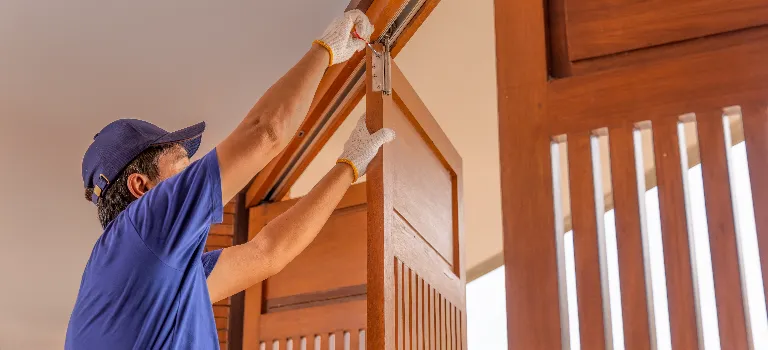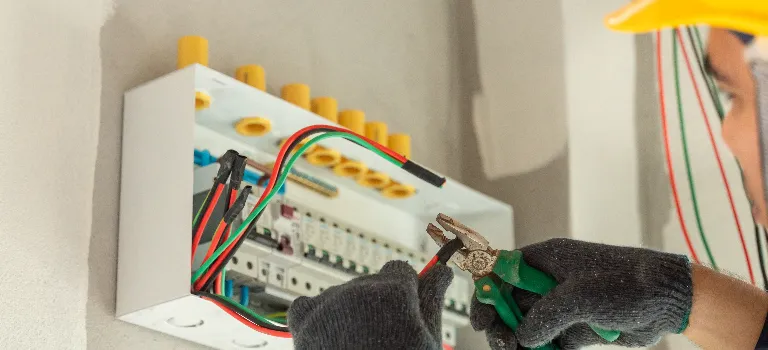Buying a new-build home, whether to live in it or let it out, can be an exciting journey as there is plenty to look forward to. From freshly decorated interiors and brand-new appliances to high energy-efficient ratings, leading developers in London compete to provide homeowners and renters with the best features. However, according to a recent survey by the Home Builders Federation, about 95% of new-build buyers report snagging issues, with nearly 47% reporting over 10 snagging issues.

If you are in the middle of a purchase or planning to buy a new-build home, here’s a checklist that will help you cover all the necessary snags and avoid future inconveniences.
Developer warranties and guarantees
Most new-build properties in London and the UK come with warranties that protect homebuyers from problems arising from structural defects and low-grade materials. The National House Building Council (NHBC) is the primary issuer of warranties that mandate housebuilders to develop high-quality properties.
A typical Buildmark cover is a 10-year warranty split into two parts. The first part covers a two-year warranty from the date of completion by the builder to rectify problems that arise from faulty building procedures and materials. Subsequently, the second part is insurance coverage for the next eight years against damage caused by structural defects. Homebuyers must check with the developer that their properties cover all these warranties to avoid setbacks.
Safety compliance and building regulations
The Building Safety Act of 2022 outlines rules for new-build developers to adhere to when constructing residential properties. From fire safety to electrical insulation, heating systems, energy efficiency, sewage systems and more, these building regulations set by NHBC ensure that all new-build developments comply with strict rules.
Check for warranty transferability
Warranties are crucial when applying for mortgages or selling a new-build property. NHBC warranties are transferable to the next buyer, but many other warranties for repairs or conversions carried out by the previous owner may not be transferable.
Interior finishing defects

With multiple projects running at a given time, developers are often chasing tight deadlines when it comes to completing homes, and this can lead to time constraints to carry out thorough checks. Therefore, it is essential that as a buyer, you check every detail, right from cosmetic defects like paint splashes and faulty joinery to cracks in the walls and plumbing issues. While a leaky tap or missing valve may not seem like a big deal on the surface, they could show a larger shoddiness in different aspects of the property.
Properly functioning windows and doors

Awkwardly leaning walls and gaps in the window or door frames are some of the most common snagging faults reported in new-build properties. Check the doors and windows for smooth operation and report if you spot any gaps or locking issues for a quick resolution. There shouldn’t be any rattling or squeakiness when opening or closing the doors and windows.
Electrical work and plumbing checks

Snagging experts can confirm technical or layered issues such as faulty insulation and incorrect DPC levels, but there are a few easy checks that you can do yourself. These include testing the showers, taps, lavatories and other bathroom fittings to check for water pressure and leaks. Regarding electrical fittings, check the condition of all the switches and sockets and the insulation features provided.
Indoor flooring and carpets
Always check the floor and carpets to spot any signs of damage, like scratches, unevenness or cracks in the tiles. The living room or reception area carpets should also be brand new and spotless with proper fitting and no visible seams. Remember, these minor issues are usually not covered under the build warranties as they do not account for structural or foundational damages such as chimneys, roofs, ceilings and other load-bearing parts.
Gardens and external work

While most often, the focus may be on the indoor fixtures and fittings, the external part of your property is as important and is supposed to be in top condition. Whether it is proper landscaping of the garden area, driveway and parking area dimensions, or the external paintwork, check all the outdoor features before moving in and using them regularly.
Importance of professional snagging
Many buyers may consider snagging an avoidable overhead cost compared to legal and professional services such as conveyancing or agent fees. However, it is a crucial part of buying a new-build property, as developers must provide the highest-quality homes. According to several snagging experts, there are shockingly over 150-200 snags discovered on average during a professional check of new builds.
While developers allow buyers to share a snag list, they do not provide professional assistance. Paying for the service of a snagging expert is a one-time cost that can sometimes reveal much more significant issues and help buyers save thousands in future repairs.
At Benham and Reeves, we bring buyers a variety of new-build homes for sale across the UK capital. Our legacy of over 65 years has helped thousands of new landlords and buyers get the right advice when making key property decisions. Whether you are looking for the top areas to invest in a London property or have any other questions related to buying, selling, or letting a property, contact us now.
International offices



















